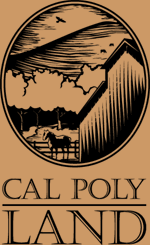We Do Bees: Queen Rearing |
|
|
Queen Rearing is part of what we do. We put together colonies of bees into hive boxes, and sell and rent out the hives to different producing farmers connected with Cal Poly. Cal Poly queen rearing is important because of the high demand for queens around California. During the winter season many queens leave for a new location usually taking with them more than half the hive while others are infected by the disease of Laying American Foulbrood. The queen never leaves the hive during spring, summer, and fall seasons unless there is an infestation of ants, mites, beetles, or food sources disappear. These problems dont affect Cal Poly. A queen is well-bred if she is laying about 2000 eggs per day. The reason Cal Poly has so much success in producing queens during the summer and early fall seasons is the ideal weather. During a wet day queens will not mate at all, but will lay more eggs on a dry sunny day to compensate for the hive's lost population on rainy days. Temperatures need to be at least 60 degrees Fahrenheit but 70's and 80's are preferable. We make sure that each of our hives has at least 50 drones per queen to maximize mating and provide enough brood-- larvae and baby bees--to keep the hive's population growing and maintain adequate production of honey.
Queen bees are raised from fertilized eggs, and their larvae need to be well nourished by the worker bees within the first couple days. Each of our hives contains a healthy breeder queen that we mark with a pen on its abdomen. We separate a portion of young bees from our regular hives into our cell-building colonies. We feed the each cell-builder continuously to stimulate the production of royal jelly and secretion wax needed to raise queen bees. We provide fresh pollen from some of our hives to the cell-building colony to supply it with protein.
Another method for raising queens is the queen-less cell builder. We select one of our strongest hives on campus-- the one that produced the most honey, is free of disease and full of pollen frames. We use three story colonies to raise the queen cells--a form of grafting technology. There must not be any larvae or eggs available to the young worker bees, and they must be separated from the original breeder queen. We feed the cell building hive sugar syrup or sugar water, corn syrup, pollen, and a little bit of water to maximize the bees production of good queen cells. It took us around 2 weeks to actually raise the queen cells. |
|
|
|
